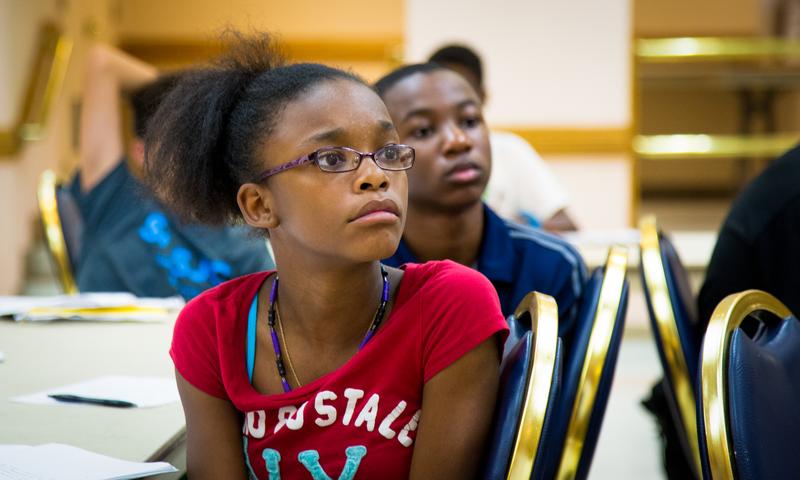 SchoolBook
SchoolBook
City to Recruit More Blacks, Latinos for Specialized High Schools

WNYC has learned the Department of Education on Thursday will announce several new initiatives aimed at improving student diversity in the city's eight specialized high schools, where black and Latino enrollment has fallen to just 11 percent.
This year, fewer blacks and Latinos were offered seats compared to last year. In response, Mayor Bill de Blasio is offering what he called a "strong package of reforms."
The city's six-pronged approach largely focuses on recruitment of high-performing middle school students through existing public and private tutoring programs. These programs, which are more popular in some communities than others, are among the reasons why Stuyvesant, Bronx Science and the other specialized high schools have a disproportionately high number of Asian and white pupils.
“This is a matter of fairness – we have to ensure that high-performing students who are black and Latino, and who come from low-income neighborhoods, have the same opportunities to enroll and thrive in these schools,” the mayor said in a statement.
The city plans to spend $15 million over the next four years on the new initiatives. They include:
- Hiring up to five outreach specialists to target low-income, high-achieving students to take the Specialized High School Admissions Test (SHSAT), and enter academic preparation programs run by the city. The city said 76 percent of blacks and 80 percent of Latinos with top scores on their state tests took the SHSAT this school year, compared to 96 percent of Asians.
- Giving the SHSAT on a school day, to boost participation, instead of on weekends. Five pilot schools will try this in October.
- Offering more test preparation to middle school students through free after-school programs. Many middle schools already partner with groups to offer SHSAT prep. The Department of Education said it will partner with private test prep agencies to expand the number of scholarships.
- Expanding the city's own free DREAM test-prep program for low-income, high-scoring students. Currently they must enroll in sixth grade. The city said it will now allow up to 500 rising eighth graders to enroll this summer. The program still has more demand than seats, however. Last year there were just 1,450 seats for incoming sixth graders, and more than 6,500 pupils were eligible.
- Expanding a summer program for low-income students who fell slightly short of the cut-off to get into specialized high schools, giving them a second chance to get in by the fall. This Discovery program will be offered at the High School of American Studies at Lehman College and Brooklyn Tech. The city said Discovery will serve 220 students this summer compared to 120 last year, and about 59 of this summer's students are black and Latino compared to 39 last year.
- Making the school climate more welcoming. The specialized high schools will be encouraged to identify student ambassadors and alumni of color to reach out to accepted students. The city said blacks and Latinos are less likely to enroll after being accepted than Asians.
“This is about equity and excellence for all of our high-performing middle school students, regardless of their zip code or background," said Chancellor Carmen Fariña. "We’re going to increase diversity without lowering any standards; to the contrary, greater diversity will help all our students succeed.”
Many critics blame the lack of diversity on the use of a single test for admissions that's given to eighth graders each fall. While de Blasio supported including other academic factors besides the test as a mayoral candidate, he has moved away from that approach.
"It's a critical first step," said Ryan Baxter, founder and chairman of the group Promoting Access to Specialized Schools in New York City (PASSNYC). He said too many middle school students don't know about the specialized schools, or learn too late to prepare well for the entrance exam.
The initiative complements legislative proposals to broaden the range of students who apply to some of the city's most-competitive high schools.
It's not clear how many students may be recruited in the first year. Some have called for giving the admissions test to all eighth graders. Josh Wallack, Deputy Chancellor for Strategy and Policy, said offering it at five sites on a school day this fall is a first step "and we'll learn from that."